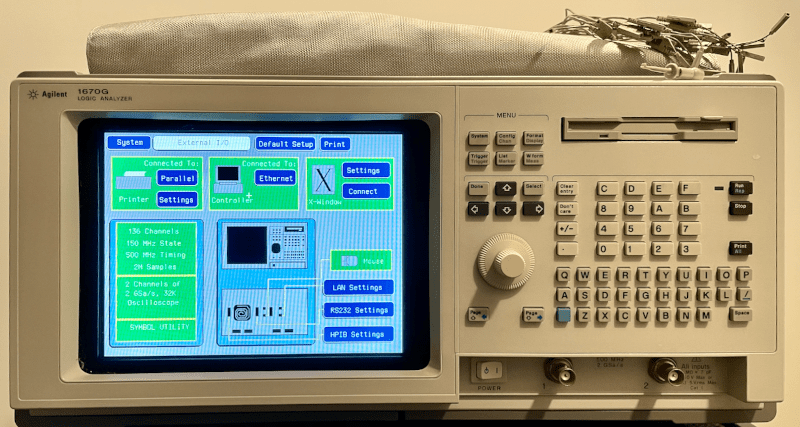
When you think of a logic analyzer today, you might think of a little USB probe that can measure a few signals and decoding for various serial buses. But actual logic analyzers were high-speed multichannel hardware with sophisticated ways to clock and trigger. [Tom] picked up an HP1670G on the surplus market and was impressed that it could sample 136 channels at 500 MHz. The circa-2000 machine has a front panel, but if you really wanted to use it, you wanted to use an X terminal. [Tom] shows us how that works with modern Linux software.
In X/11 parlance, the terminal is the server, and the remote computer is the client. In the old days, when people weren’t so obsessed with security, running applications from multiple clients on a single server was easy. These days, most Linux distributions have made the X/11 system little more than a display driver. Logging into a remote system usually requires some hoops. However, [Tom] went with a different approach. Using socat, he routes incoming X/11 connections to his local X server.
There’s more to it than just that. You must also assign addresses, punch holes in your firewall, and set up the right fonts. It is all there in the post.
Oddly enough, we’ve seen this logic analyzer accessed remotely before using a more traditional method. Even Windows can host an X server, by the way.
Modern Control of a Logic Analyzer
Source: Manila Flash Report
0 Comments